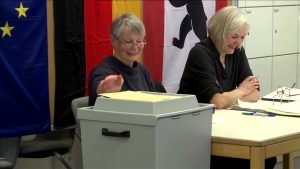The Medici: Godfathers Of The Renaissance — Part 4 of 4 - Power vs Truth
This episode details the humble distant Medici relative Cosimo who grew up in the countryside being placed at the head of the family, despite his not being from the main bloodline of the Medicis and not being educated as a prince; Cosimo marrying a Spanish princess who brought the protection of Spain and a large dowery and an army; the financing of propaganda with Cosimo’s image being the subject of large amounts of murals depicting the Medicis as heros; the family having a falling out with Michelangelo; and the rise of the scientist Galileo Galilei who risked being persecuted and killed by the Church for publishing his scientific works.
Points made in this episode:
— The Duke of Florence Allisandro Medici, who was an illegitimate son of the Medici Pope was assassinated in 1537, causing his humble distant fourth cousin Cosimo who lived in the countryside to replace him despite his not being from the main bloodline of the Medici family and not being educated as a prince.
— Florence was in decline and on the brink of anarchy with the Medicis being a hated dynasty when Cosimo took power, with him being haunted by feelings of illegitimacy and fears of assassination.
— Giorgio Vasari saved the broken arm of the statue of David and reattached it in 1543, which resulted in political gain for Cosimo.
— Cosimo trained as a swordsman and started to resurrect key aspects of the Renaissance.
— Michelangelo’s fresco of the Last Judgement at the Vatican was full of completely naked men, causing it to be declared indecent and parts of it to be painted over. [Note: I think it was very appropriate to paint over those parts, although suprisingly the people who did it didn’t even really go far enough with it. I don’t understand how Italy could have been so tolerant of nudity in artwork at the time, especially male nudity. Men didn’t walk down the street in such a manner, so why did most of the people apprently think it was acceptable to see that in public sculptures and paintings, especially in a church? I woundn’t be surprised if the current pro-“LGBQ+” “Vatican II” Catholic administration would remove the parts of the fresco that have been painted over to restore it to the way that Michelangelo originally painted it.]
— Cosimo married a Spanish princess, bringing protection from the Spanish and approval of his regime, and with his bride bringing a large dowery and an army.
— Cosimo commissioned the building of a navy for the first time in Florence, using his new military power to consolidate the rest of Tuscany.
— Cosimo employed Giorgio Vasari to use the arts for creating a systematic form of propaganda for the first time in history, with Cosimo’s image being the subject of large amounts of murals depicting the Medicis as heros.
— Cosimo’s wife Elenora purchased a fortress for the family with her own money, which protected them against potential assassination plots.
— Cosimo was a devoted family man.
— Cosimo built a large well-protected office complex in order to safely house the government administration.
— Michelangelo resented Cosimo’s controlling style and refused to go back to Florence. He died in 1564 and his body was brought from Rome anyway for an enormous funeral that was staged for him in Florence, which allowed Cosimo to co-opt his support after his death and propel him to historic immortality.
— Vasari wrote the world’s first art history book which immortalized the Medici family, being an important book that was the first definition of the Renaissance.
— The ideals of the Renaissance offended the Catholic Church which was still reeling from the Protestant Revolt, with it being determined to reestablish its authority by creating an agency of obedience known as the Roman Inquisition, where questioning the teachings of the Church was deemed a crime that was sometimes punishable with death.
— Cosimo staged token public book burnings to appease the Pope, and he was then crowned the Grand Duke of Tuscany by the Pope himself, leading to Cosimo now controlling middle Italy from coast to coast.
— The scientist Galileo Galilei was appointed the educator and mentor of the Medici princes while he made many important scientific discoveries, such as being the first to discover that the sun had spots, identifying the Milky Way Galaxy, and he was the first to see the moons of Jupiter.
— A friend of Galileo who was a Dominican Friar named Giordano Bruno was burned at the stake by the Church for claiming that the Universe was infinite.
— Galileo questioned that the Earth was at the center of the Universe, and instead he postulated that the Earth revolves around the Sun in a book he labeled as a “philosophical comedy” of “fictional characters,” naming the book “Dialog Concerning the Two Chief World System.” It became an instant bestseller when became available in Florence, becoming the first book of popular science.
— Galileo’s book made the Pope furious, who summoned him to face an inquisition in 1633 where he was put on trial without a jury, and Galileo was forced to deny on his knees what he wrote in the book. He was sentenced to house arrest in Tuscany until he died in 1642, and the church denied him a public funeral.
— The documentary series closes by explaining that the Medici family left a legacy of patronizing many of the geniuses that have changed the Western world, with what they started being a spirit of reason and enlightenment that would give rise to the modern world.
Article Tree
| A Summary of the History of the World, in Videos |
| THE EUROPEAN RENAISSANCE PERIOD (1300 AD — 1700 AD) |
| “The Medici: Godfathers of the Renaissance” (documentary series) |
| Video: The Medici: Godfathers Of The Renaissance — Part 4 of 4 - Power vs Truth |



